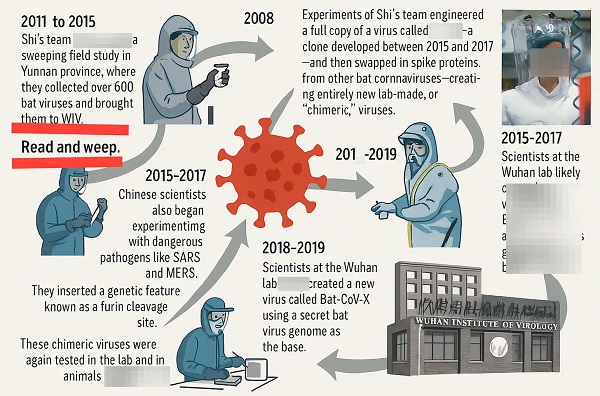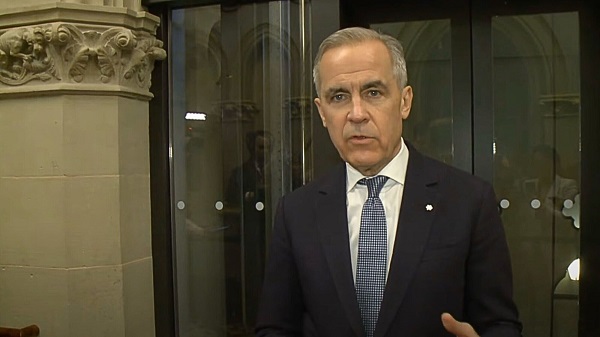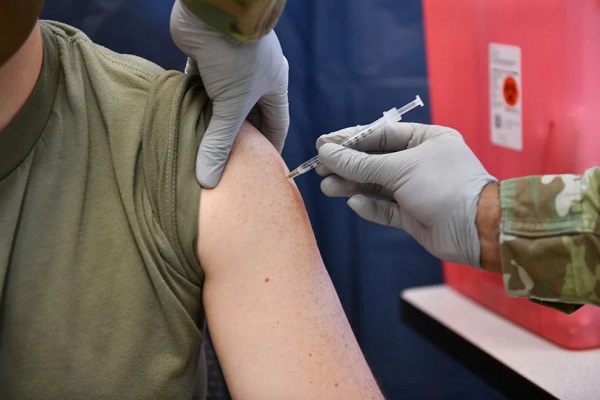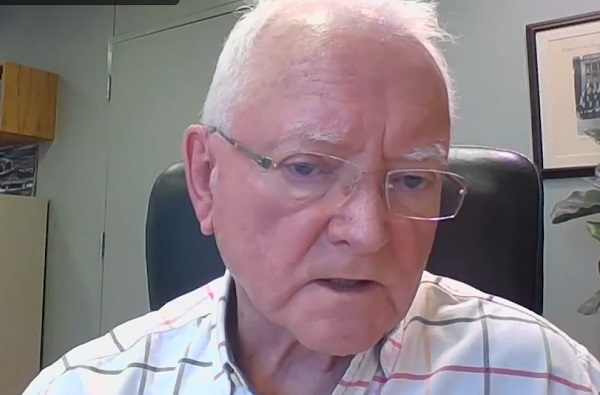2025 Federal Election
BLOCKBUSTER REPORT: Canada’s ties to Wuhan Institute of Virology and creation of COVID uncovered by Sam Cooper of The Bureau

Exclusive: CSIS Told Us We Were Infected at Wuhan Games, Soldier Says—But Ottawa Kept It Quiet
 Sam Cooper
Sam Cooper
CAF member has come forward with explosive testimony that Canadian intelligence agents assessed soldiers were infected with COVID-19 at the 2019 Wuhan Games—but the findings were buried in Ottawa.
“I was in Wuhan in the fall of 2019 at the World Military Games. A significant number of the team, and I myself, contracted COVID and became very, very ill.”
With that statement, delivered in confidential testimony to The Bureau, a Canadian Armed Forces member added his voice to one of the most powerful emerging revelations in the global search for the origins of COVID-19. His account closely matches the U.S. Department of Defense’s newly declassified conclusion that seven American soldiers fell ill with COVID-like symptoms during the same October 2019 military competition in Wuhan, China.
The American military investigation was ordered by Congress in 2021 but kept from the public until a Freedom of Information Act lawsuit forced its release. Critics now say the Biden administration suppressed the findings, which suggest U.S. intelligence agencies had early evidence of a viral outbreak tied to the Games.
The Canadian soldier believes voters deserve to know that CSIS—Ottawa’s civilian intelligence agency—also assessed that Canadian military athletes were infected in Wuhan, and that the Trudeau government chose not to inform the public. “Yes, CSIS and a number of other such organizations did interview members of the contingent,” he said of his experience upon returning to Canada. “They were professional and concerned only with facts. But when completing their interviews, they let it be known that their work and report would be suppressed.”
The Bureau has independently confirmed, through multiple confidential interviews, that Canadian intelligence did in fact interview military athletes and concluded they had experienced COVID-like symptoms while in Wuhan.
“The story of U.S. athletes becoming very sick while in Wuhan, or shortly after returning, and the institutional cover-up since—it mirrors exactly what Canadian Forces athletes experienced,” the CAF member explained.
“I say cover-up because, while it would have been difficult to know at the time that we had COVID, the timeline and intelligence were well known by May [2020.] Still, neither operational commanders or CAF health officials were willing or interested to conduct a fulsome assessment of the contingent.”
His testimony now stands alongside a torrent of new disclosures—including a bombshell release from the U.S. Defense Intelligence Agency—that together appear to draw a new, starker picture of what happened in Wuhan and how it may be linked to dangerous Canadian research.
The DIA documents, made public only after a Freedom of Information Act lawsuit by US Right to Know, include a 46-slide classified briefing dated June 25, 2020. It concludes that COVID-19 is most consistent with a lab-engineered virus created at the Wuhan Institute of Virology (WIV), likely under the direction of Dr. Shi Zhengli.
“Hypothesis: In mid-2019, one of the not fully characterized Bat-CoV-X chimeric viruses escaped from the WIV facilities and began infecting civilians in the city of Wuhan,” the document says.
In chronology, the DIA report focuses on a 2008 study co-authored by Dr. Shi, which showed that bat coronaviruses could be altered to infect human cells. The study described how swapping small genetic pieces in the virus allowed it to attach to human receptors. This work laid the foundation for later experiments in Wuhan that involved creating new hybrid viruses.
From 2011 to 2015, Dr. Shi’s team conducted a sweeping field study in Yunnan province, where they collected over 600 samples from multiple bat species living in caves and forested regions. The viruses were brought back to Wuhan and stored at the Institute—forming the core of a growing coronavirus research bank.
Shi’s team engineered a full copy of a virus called WIV1—a clone developed between 2015 and 2017—and then swapped in spike proteins from other bat coronaviruses—creating entirely new lab-made, or “chimeric,” viruses. According to U.S. intelligence analysts, this was one of the key human-made modifications that allowed the virus to more effectively bind to human cells—marking a potential step toward weaponizing the bat virus.
During this same 2015–2017 window, Chinese scientists also began experimenting with dangerous pathogens like SARS and MERS. They inserted a genetic feature known as a furin cleavage site—another significant modification known to increase a virus’s ability to infect human cells. These modified viruses were tested both in lab dishes and in live animals. The experiments were conducted under BSL-2 safety conditions, which in China are less strict than in the United States. According to U.S. military intelligence, Chinese BSL-2 labs have a documented history of leaks.
In this process, between 2017 and 2019, scientists at the Wuhan lab likely created a new virus called Bat-CoV-X using a secret bat virus genome as the base, the intelligence slide says. They continued building more versions by swapping in different genetic parts—especially the pieces that help the virus bind to human cells—and adding the furin cleavage site. These chimeric viruses were again tested in the lab and in animals throughout 2018 and into 2019, just before the outbreak began.
The final readable slide in the redacted DIA document concluded: “The molecular biology capabilities of WIV and the genome assessment are consistent with the hypothesis that SARS-CoV-2 was a lab-engineered virus that was part of a bank of chimeric viruses in Zhen-Li Shi’s laboratory at WIV that escaped from containment.”
By early 2020—when athletes around the world, including Canadian and U.S. soldiers, had already returned to their home countries with COVID-19-like infections—the Wuhan Institute of Virology and other Chinese government-controlled agencies began publishing studies promoting a natural zoonotic origin for SARS-CoV-2 and deflecting scrutiny from any laboratory origin theory.
The Canadian–Chinese Lab Connection
What makes the Defense Intelligence Agency’s timeline bombshell especially troubling for Canada is how closely it aligns with The Bureau’s earlier reporting on Dr. Xiangguo Qiu. Dr. Qiu was the now-expelled head of special pathogens at Canada’s National Microbiology Laboratory in Winnipeg. Canadian intelligence documents reviewed by The Bureau confirm that Qiu had an active working relationship with Dr. Shi Zhengli, the Wuhan lab, and the People’s Liberation Army, beginning in 2017. Together, they co-led research on Ebola and synthetic bat coronaviruses—projects funded by the Chinese Academy of Sciences and supported by CanSino Biologics, a state-owned company tied to China’s military.
In a previous interview with The Bureau, Dr. Asher said he could not reveal the classified intelligence his team reviewed. However, he made clear that his State Department investigators were deeply concerned that Beijing was using the Winnipeg lab for military intelligence gathering and bioweapons research.
“The Wuhan Institute of Virology wasn’t just a government lab creating novel pathogens—it was and is a civil-military fusion hub that had a biological intelligence operational collection mission ensconced in its web of nefarious activities,” Asher said, including “illicitly acquiring Ebola and doing research on bio-synthesis of this massively deadly pathogen, to make it super contagious.”
On April 10, Asher posted the newly released DIA report to social media, writing simply: “Read and weep.”
“I told people in the media and wrote repeatedly four years ago that, from the early days, U.S. Department of Defense and national lab analysts had highlighted the probability that COVID was created with synthetic biology,” Asher wrote. “Well now, thanks to US Right to Know, you can see one of several presentations on this likelihood from DIA.”
Although there is no evidence that Dr. Qiu transferred any bat coronavirus samples or physical materials related to the WIV bat project, the newly released U.S. intelligence raises the possibility that her intellectual contributions from Canada may have been more central than previously realized. At minimum, the documents confirm that Qiu was operating inside one of the world’s most advanced virology labs in Canada while simultaneously collaborating with the same Wuhan scientists now identified in the U.S. report as architects of a chimeric virus bank.
The documents also confirm that Wuhan scientists aggressively pressured Canadian researchers to share samples with the Wuhan Institute of Virology, and that Chinese military agents repeatedly breached security protocols at the Winnipeg lab—roaming unchecked through restricted areas—and clandestinely transported biological materials in and out while working with Dr. Qiu and her husband.
In detail, what the CSIS intelligence records show is that Dr. Qiu—a senior scientist at Canada’s National Microbiology Laboratory—began building formal ties with the Wuhan Institute and the Chinese Academy of Sciences in the years leading up to the pandemic. She applied to join the Thousand Talents Plan in 2017, a covert Chinese government program designed to recruit foreign experts. CSIS determined that the Wuhan Institute co-sponsored her application and that Qiu began receiving undisclosed funding through a secret Chinese bank account. She worked closely with Dr. Shi Zhengli, China’s top bat virus expert.
In June 2018, Dr. Qiu applied for a “high-end” research project through the Chinese Academy of Sciences, an institution CSIS describes as working closely with the People’s Liberation Army on dual-use biotechnology. This suggests a turning point: Dr. Qiu moved from academic collaboration to direct involvement in China’s military-linked pathogen research programs, effectively bridging Canada’s Winnipeg Lab with the Wuhan Institute of Virology on synthetic bat virus research.
Between 2018 and 2019, Dr. Qiu co-led two classified research streams with Dr. Shi at the Wuhan lab: one focused on gain-of-function experiments with Ebola, aimed at studying how the virus could be made more contagious; the second on synthetic bat coronavirus construction, building lab-made viruses.
In October 2018, a Wuhan lab technician referred to as “Individual 2” in CSIS reports was caught attempting to remove 10 unlabelled test tubes from the Winnipeg lab. While the contents have never been disclosed, the incident triggered internal alarms over unauthorized transfers. Then, in March 2019, Dr. Qiu and another Winnipeg scientist shipped live samples of Ebola, Nipah, and specially adapted virus strains to the Wuhan Institute of Virology. These transfers occurred just months before the U.S. intelligence timeline suggests a lab-engineered virus escaped containment in Wuhan.
While the Ebola and Nipah viruses she is known to have transferred are not coronaviruses, her scientific standing, access to biocontainment environments, and coordination with Dr. Shi suggest her work likely supported, directly or indirectly, the scientific environment that produced the agent of the COVID-19 pandemic. If the escape occurred in mid-2019, it would place Qiu and her prior visits to WIV in the direct window of critical research activities.
For Canadian readers and voters—as new revelations emerge about Chinese interference and apparent favouritism toward the Liberal government under Mark Carney—the Trudeau government’s failure to act on early intelligence warnings demands renewed scrutiny.
Canada’s intelligence agency raised red flags about Dr. Xiangguo Qiu’s activities as early as 2018. Yet collaboration with Chinese military-linked laboratories continued right up to the brink of the COVID-19 outbreak. Samples were transferred. Funding continued to flow. Warnings were dismissed. No one was held accountable.
For the Canadian soldier who came forward, at a minimum, Canadians should know more about China’s suspected role in the creation of the bat coronavirus and cover-up, and whether Canadian scientific capacity played a direct or indirect role.
“I have no special insights as to links with the Winnipeg lab, CCP/MSS infiltration there, or how this tied to COVID-19,” the Canadian soldier said. “That said, considering the vast, deep, and broad collusion between Canadian officials and organs of the PRC, nothing should be dismissed.”
The Bureau is a reader-supported publication.
To receive new posts and support my work, consider becoming a free or paid subscriber.
Invite your friends and earn rewards
2025 Federal Election
Mark Carney Vows Internet Speech Crackdown if Elected


By
Mark Carney dodges Epstein jabs in Hamilton while reviving failed Liberal plans for speech control via Bill C-36 and Bill C-63.
|
It was supposed to be a routine campaign pit stop, the kind of low-stakes political affair where candidates smile like used car salesmen and dish out platitudes thicker than Ontario maple syrup. Instead, Mark Carney found himself dodging verbal bricks in a Hamilton hall, facing hecklers who lobbed Jeffrey Epstein references like Molotovs. No rebuttal, no denial. Just a pivot worthy of an Olympic gymnast, straight to the perils of digital discourse.
“There are many serious issues that we’re dealing with,” he said, ignoring the criticism that had just lobbed his way. “One of them is the sea of misogyny, antisemitism, hatred, and conspiracy theories — this sort of pollution online that washes over our virtual borders from the United States.”
Ah yes, the dreaded digital tide. Forget inflation or the fact that owning a home now requires a GoFundMe. According to Carney, the real catastrophe is memes from Buffalo.
The Ghost of Bills Past
Carney’s new plan to battle the internet; whatever it may be, because details are apparently for peasants, would revive a long-dead Liberal Party obsession: regulating online speech in a country that still pretends to value free expression.
It’s an effort so cursed, it’s been killed more times than Jason Voorhees. First, there was Bill C-36, which flopped in 2021. Then came its undead cousin, Bill C-63, awkwardly titled the Online Harms Act, which proposed giving the Canadian Human Rights Commission the power to act as digital inquisitors, sniffing out content that “foments detestation or vilification.”
Naturally, it died too, not from public support, but because Parliament decided it had better things to do, like not passing it in time.
But as every horror franchise teaches us, the villain never stays away for long. Carney’s speech didn’t include specifics, which is usually code for “we’ll make it up later,” but the intent is clear: the Liberals are once again oiling up the guillotine of speech regulation, ready to let it fall on anything remotely edgy, impolite, or, God forbid, unpopular.
“Won’t Someone Think of the Children?”
“The more serious thing is when it affects how people behave — when Canadians are threatened going to their community centers or their places of worship or their school or, God forbid, when it affects our children,” Carney warned, pulling the emergency brake on the national sympathy train. It’s the same tired tactic every aspiring control freak uses, wrap the pitch in the soft fuzz of public safety and pray nobody notices the jackboot behind the curtain.
Nothing stirs the legislative loins like invoking the children. But vague terror about online contagion infecting impressionable minds has become the go-to excuse for internet crackdowns across the Western world. Canada’s Liberals are no different. They just dress it up and pretend it’s for your own good.
“Free Speech Is Important, But…”
Former Heritage Minister Pascale St-Onge, doing her best impression of a benevolent censor, also piped up earlier this year with a classic verbal pretzel: “We need to make sure [freedom of expression] exists and that it’s protected. Yet the same freedom of expression is currently being exploited and undermined.”
Protecting free speech by regulating it is the sort of logic that keeps satire writers out of work.
St-Onge’s lament about algorithms monetizing debate sounds suspiciously like a pitch from someone who can’t get a word in on X. It’s the familiar cry of technocrats and bureaucrats who can’t fathom a world where regular people might say things that aren’t government-approved. “Respect is lacking in public discourse,” she whined on February 20. She’s right. People are tired of pretending to respect politicians who think governing a country means babysitting the internet.
|
|
|
|
Powerful forces want to silence independent voices online
|
|
Governments and corporations are working hand in hand to control what you can say, what you can read; and soon, who you are allowed to be.
New laws promise to “protect” you; but instead criminalize dissent.
Platforms deplatform, demonetize, and disappear accounts that step out of line.
AI-driven surveillance tracks everything you do, feeding a system built to monitor, profile, and ultimately control.
Now, they’re pushing for centralized digital IDs; a tool that could link your identity to everything you say and do online. No anonymity. No privacy. No escape.
This isn’t about safety, it’s about power.
If you believe in a truly free and open internet; where ideas can be debated without fear, where privacy is a right, and where no government or corporation dictates what’s true; please become a supporter.
By becoming a supporter, you’ll help us:
We don’t answer to advertisers or political elites.
If you can, please become a supporter. It takes less than a minute to set up, you’ll get a bunch of extra features, guides, analysis and solutions, and every donation strengthens the fight for online freedom.
|
|
2025 Federal Election
Corporate Media Isn’t Reporting on Foreign Interference—It’s Covering for It


 Dan Knight
Dan Knight
A CCP-linked propaganda campaign boosted Mark Carney, but instead of sounding the alarm, the CBC cast him as the victim. The truth? He wasn’t targeted—he was the beneficiary.
So let’s stop pretending. The headlines, the bureaucratic spin, the carefully worded talking points—none of it changes what actually happened. This week the Canadian government just confirmed what they’ve been denying for years: the Chinese Communist Party is interfering in our elections. Not in theory. Not in the abstract. Right now. In real time.
And who’s the beneficiary? It’s not the opposition. It’s not the people calling out foreign interference. It’s not the Conservative candidates getting smeared, doxxed, or targeted by digital hit jobs. No, the beneficiary is the man now leading the Liberal Party. The man who was handpicked to replace Trudeau and keep the globalist machine running smoothly. That man is Mark Carney.
According to the SITE Task Force—the very same group tasked with monitoring foreign interference—a CCP-linked WeChat account ran coordinated messaging in Chinese-language communities across Canada. That messaging didn’t attack Carney. It elevated him. It portrayed him as a strong, capable leader, someone who would stand up to the United States. That’s not an attack. That’s not foreign meddling meant to sow chaos. That’s targeted influence designed to shape an outcome. To tip the scale.
So what did the press do with this information? CBC, CTV, the Globe and Mail—they all ran with the same disingenuous line: “Chinese information operation focused on Carney.” Focused? That’s the best they could do? He wasn’t the focus. He was the favorite. He wasn’t the target. He was the chosen candidate. The state broadcaster, which receives $1.2 billion a year in taxpayer funds, chose to frame a CCP influence operation that benefited Carney as if he were the victim. And they wonder why trust in media is collapsing.
Meanwhile, who was actually targeted? Joe Tay. A Conservative candidate. A Canadian citizen. And someone with the courage to speak out against Beijing’s repression. For that, the Hong Kong government—acting on orders from the CCP—put a bounty on his head. HK$1 million for his arrest. And then, in an absolutely disgraceful moment, Liberal MP Paul Chiang repeated that bounty in public, in Canada, saying someone could take Tay to the Chinese consulate and claim the reward.
What was Carney’s response? He called it a “lapse in judgment.” A “teachable moment.” Chiang remained a candidate until the scandal became too big to ignore and the resignation came—conveniently timed just before midnight. And not once—not once—did Carney publicly condemn the CCP. Not once did he say the name of the regime running operations to influence Canadian politics. Not once did he call out the foreign government targeting his opponents and helping him.
Why would he? He doesn’t want the interference to stop. He and the Liberals have benefited from it before—just ask Han Dong in Don Valley North—and they’re benefiting from it now. This isn’t hesitation. It’s a pattern. A Liberal MP parrots a CCP bounty and they defend him. A CCP media operation boosts their leader and they stay quiet. CSIS warns them about Beijing’s interference and they bury it. Every time, they play dumb. Every time, it’s the same excuse: no impact, no problem, nothing to see here.
But Canadians are not blind. They can see what’s happening. They can see who benefits. And they’re starting to realize that this isn’t about safeguarding democracy. It’s about safeguarding a narrative. Because when your elections are being massaged by foreign powers, and your media is too compromised to call it out, the system doesn’t just have a problem. It has a crisis.
And if we don’t deal with it now—if we let Beijing call the shots and let the CBC clean up the mess—then we’re not a democracy anymore. We’re a client state. And the country we thought we had will be gone. Quietly. Carefully. And permanently.
Subscribe to The Opposition with Dan Knight .
For the full experience, upgrade your subscription.
-

 2025 Federal Election1 day ago
2025 Federal Election1 day agoLiberals Replace Candidate Embroiled in Election Interference Scandal with Board Member of School Flagged in Canada’s Election Interference Inquiry
-

 Alberta1 day ago
Alberta1 day agoIs Canada’s Federation Fair?
-

 Alberta1 day ago
Alberta1 day agoProvince introducing “Patient-Focused Funding Model” to fund acute care in Alberta
-

 espionage1 day ago
espionage1 day agoU.S. Experts Warn Canada Is Losing the Fight Against PRC Criminal Networks—Washington Has Run Out of Patience
-

 COVID-1921 hours ago
COVID-1921 hours agoMassive new study links COVID jabs to higher risk of myocarditis, stroke, artery disease
-

 Alberta1 day ago
Alberta1 day agoMedical regulator stops short of revoking license of Alberta doctor skeptic of COVID vaccine
-

 International1 day ago
International1 day agoUN committee urges Canada to repeal euthanasia for non-terminally ill patients
-

 Automotive1 day ago
Automotive1 day agoTesla Vandals Keep Running Into The Same Problem … Cameras





